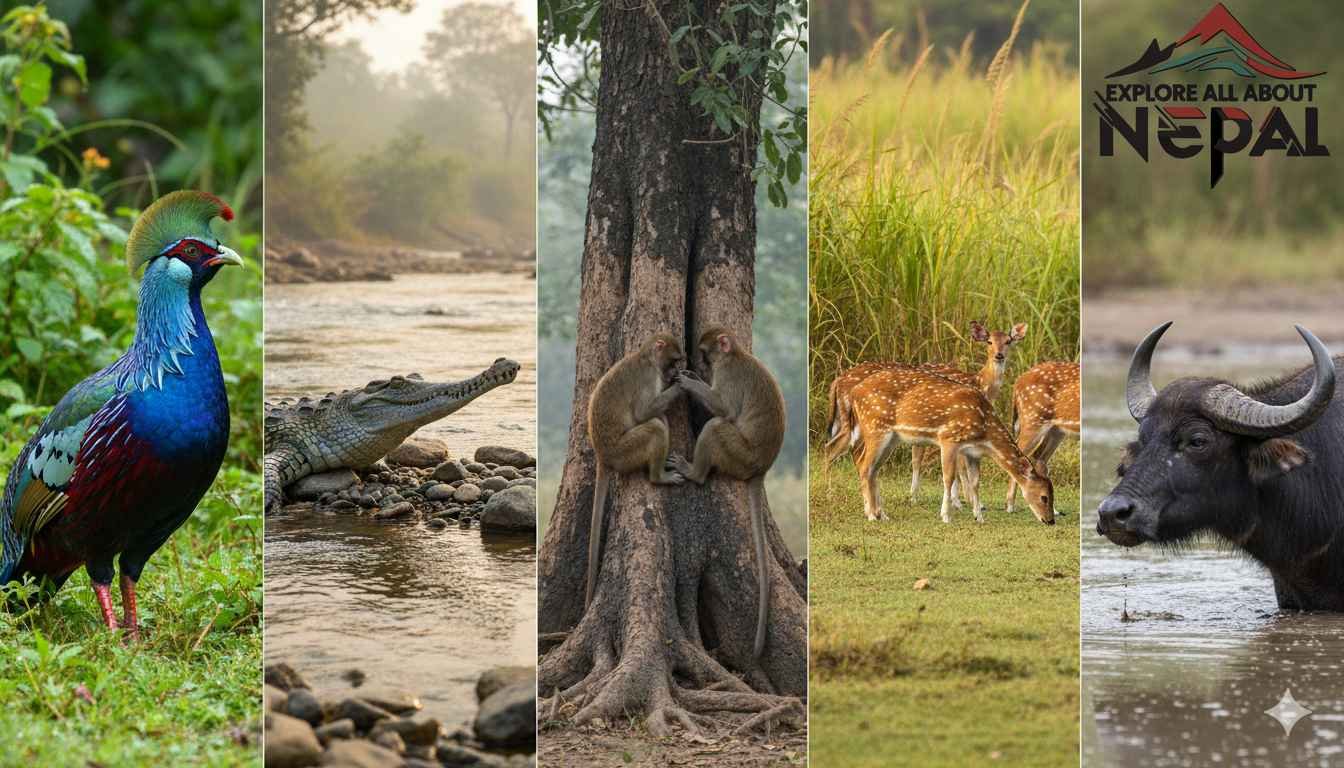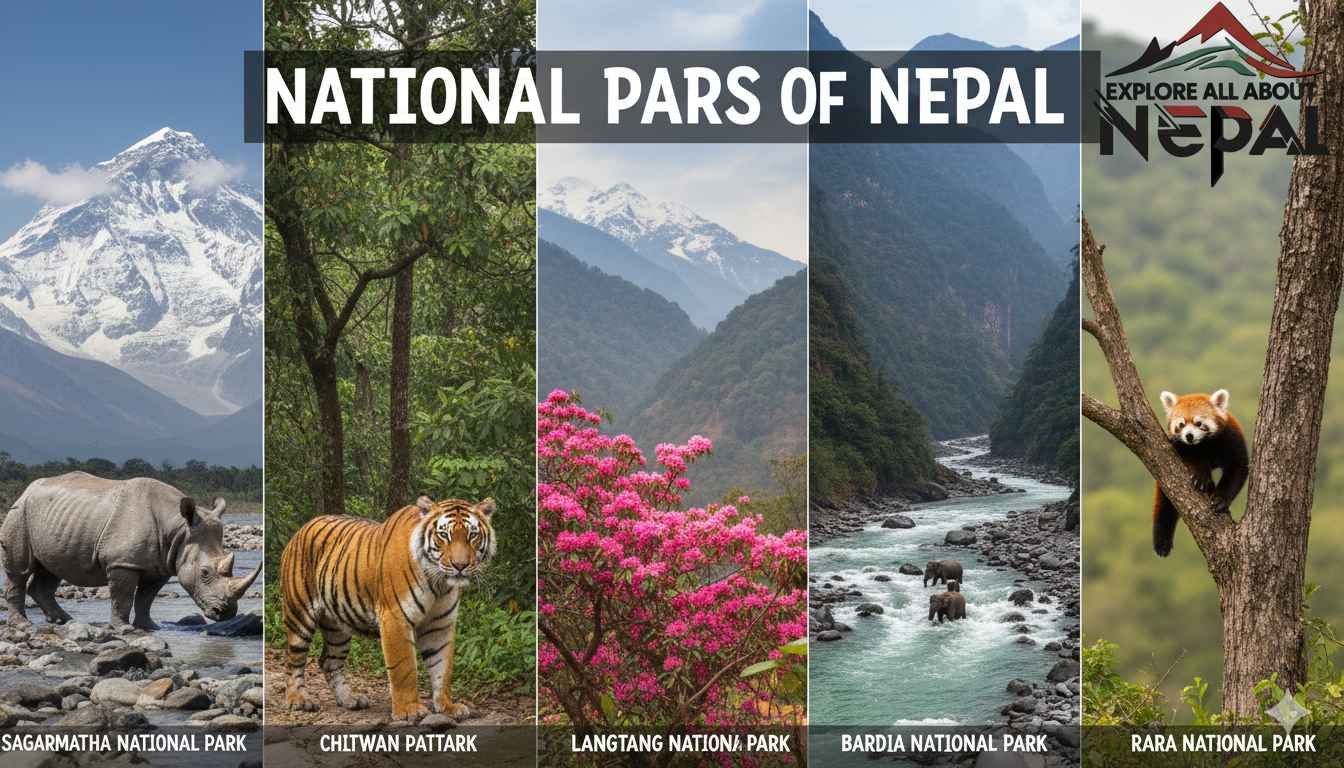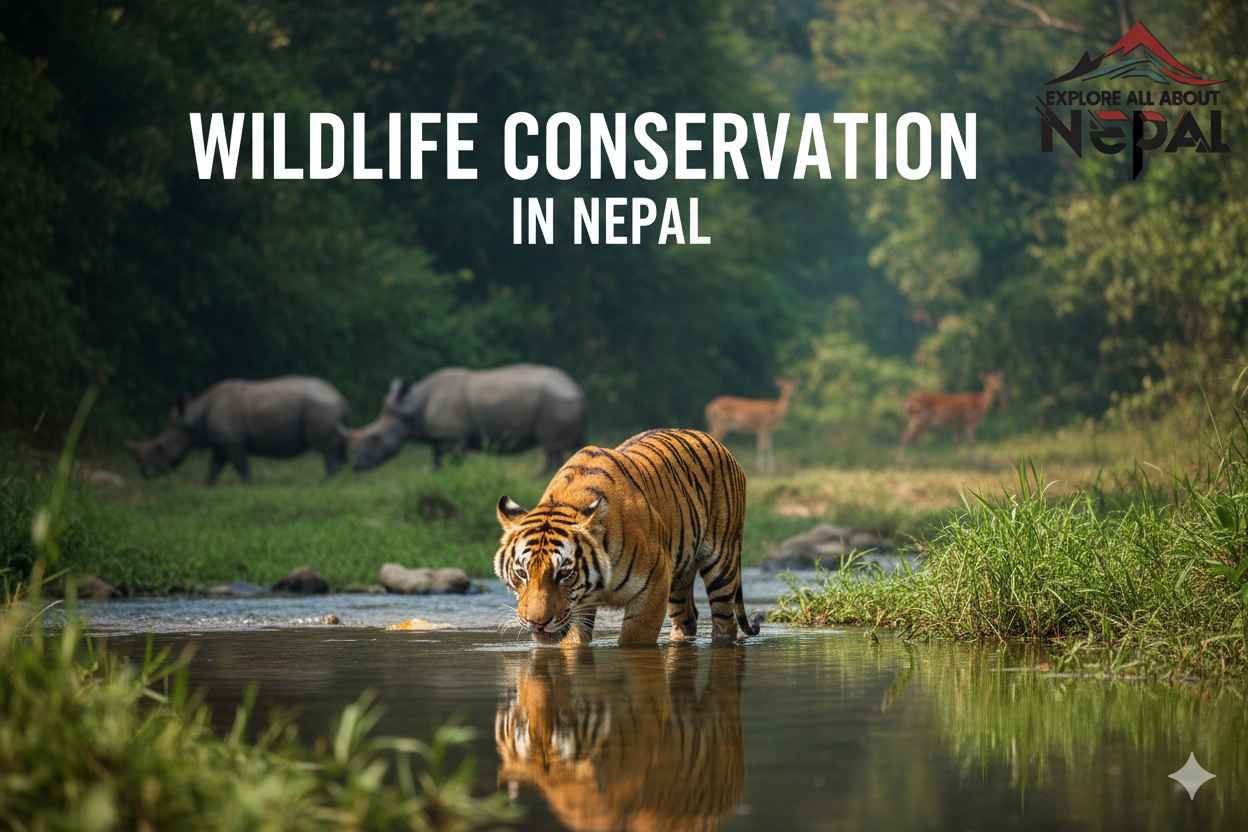
Wildlife Conservation in Nepal
Nepal is globally famous for its iconic wildlife, particularly tigers in Chitwan and rhinos in Bardia National Park. However, Wildlife Conservation in Nepal extends far beyond these well-known species. The country is home to a staggering array of biodiversity, from elusive snow leopards in the high Himalayas to vibrant red pandas in the eastern forests.
For eco-tourists, trekkers, and wildlife enthusiasts, exploring Nepal’s conservation efforts provides a rare opportunity to witness unique species, understand local ecosystems, and engage with communities protecting these fragile habitats. This guide focuses on the lesser-known species, conservation initiatives, and practical ways to support wildlife in Nepal.
Lesser-Known Species of Nepal
While tigers and rhinos dominate headlines, Nepal’s rich ecosystems host a wealth of other species that need attention and protection.
Snow Leopards
The snow leopard is one of the most iconic high-altitude species in the Himalayas. Found in regions like Upper Mustang, Dolpo, and Humla, these big cats are elusive and endangered. Wildlife Conservation in Nepal efforts include camera-trap monitoring, community awareness programs, and habitat preservation.
Red Pandas
Eastern Nepal, particularly in Ilam and the Langtang region, shelters red pandas. These arboreal mammals are highly sensitive to habitat loss, and community forest programs have played a key role in their protection.
Musk Deer
Found in high-altitude forests, musk deer are threatened by poaching for their musk glands. Conservation programs involve anti-poaching patrols and raising awareness among local communities.
Himalayan Wolves and Wild Yaks
The remote regions of Upper Mustang and Dolpo also host Himalayan wolves and wild yaks. Both species are crucial for maintaining ecological balance in fragile high-altitude ecosystems.
By focusing on these species, Wildlife Conservation in Nepal ensures that biodiversity beyond the “charismatic megafauna” is preserved for future generations.
Key National Parks & Protected Areas
Nepal has an impressive network of protected areas, many of which prioritize species beyond tigers and rhinos.

Wildlife Conservation in Nepal
Shey Phoksundo National Park
Located in Dolpo, this park is home to the mystical Shey Phoksundo Lake and several endangered species, including snow leopards and blue sheep.
Community-based conservation ensures sustainable tourism while protecting fragile ecosystems.
Sagarmatha National Park
While famous for Everest, this park also protects the snow leopard, Himalayan tahr, and rare Himalayan pheasants.
Trekking responsibly here supports ongoing wildlife monitoring programs.
Langtang National Park
Langtang protects red pandas, Himalayan black bears, and diverse bird species.
Ecotourism initiatives help fund conservation and provide alternative livelihoods for local communities.
Annapurna Conservation Area
The largest protected area in Nepal, Annapurna hosts snow leopards, musk deer, and endemic flora.
Community-managed conservation areas demonstrate the success of local stewardship.
These parks are pillars of Wildlife Conservation in Nepal, balancing tourism, local livelihoods, and species protection.
Community-Based Conservation Efforts
Community involvement is crucial for successful Wildlife Conservation in Nepal. Local residents often live alongside wildlife, and their participation ensures long-term sustainability.
Eco-Tourism Initiatives: Villages host trekkers and volunteers, providing income that reduces dependency on harmful practices like poaching or deforestation.
Wildlife Monitoring Programs: Communities assist with camera traps, GPS tracking, and reporting illegal activities.
Education and Awareness: Schools and community groups teach the value of biodiversity and the importance of protecting endangered species.
These efforts have proven effective in Dolpo, Upper Mustang, and Chitwan buffer zones, creating models for conservation across the country.
Challenges in Wildlife Conservation
Despite successes, Wildlife Conservation in Nepal faces significant challenges:
Habitat Loss
Urbanization, road construction, and deforestation fragment habitats, threatening species like red pandas and snow leopards.
Human-Wildlife Conflict
As communities expand, conflicts with predators like snow leopards and Himalayan wolves increase, leading to retaliatory killings.
Poaching and Illegal Trade
Musk deer, pangolins, and some bird species are targeted for illegal trade. Enforcement of wildlife laws is improving but remains a challenge in remote regions.
Climate Change
Glacial melting, unpredictable rainfall, and shifting vegetation zones impact high-altitude species. Conservation programs now include climate adaptation strategies.
Addressing these issues is essential for the long-term success of Wildlife Conservation in Nepal.
How Tourists Can Support Conservation
Tourists play a vital role in supporting Wildlife Conservation in Nepal. Simple actions can make a difference:
Responsible Trekking: Stick to marked trails, avoid disturbing wildlife, and minimize waste.
Eco-Friendly Accommodation: Stay in community-run lodges or homestays supporting local conservation projects.
Volunteering: Programs like wildlife monitoring or habitat restoration provide hands-on support.
Awareness: Share your experience to raise awareness about lesser-known species and conservation issues.
Supporting local initiatives ensures that tourism benefits both communities and wildlife.
Success Stories Beyond Tigers & Rhinos
Nepal’s conservation efforts have produced inspiring results:
Snow Leopard Conservation: Populations are slowly recovering in Upper Mustang and Dolpo through community-led monitoring.
Red Panda Protection: Community forests in Langtang and Ilam provide safe habitats.
Musk Deer Preservation: Anti-poaching programs have reduced illegal hunting in remote valleys.
Reforestation and Habitat Restoration: Local initiatives have restored degraded areas, benefiting multiple species.
These examples show that Wildlife Conservation in Nepal extends beyond iconic animals, creating a holistic approach to protecting biodiversity.
Tips for Wildlife Enthusiasts
Travel in the Right Season: Spring and autumn provide the best chances for wildlife sightings.
Hire Local Guides: They know animal behavior, safe observation techniques, and support community livelihoods.
Carry Binoculars & Cameras: Respect wildlife—observe from a distance without disturbing habitats.
Support Local Conservation Projects: Even small donations help fund ranger patrols and habitat protection.
By following these tips, tourists become active participants in Wildlife Conservation in Nepal.
Nepal is a biodiversity hotspot, and Wildlife Conservation in Nepal is about much more than tigers and rhinos. From snow leopards to red pandas, musk deer to Himalayan wolves, the country’s ecosystems are diverse and fragile.
Through national parks, community programs, and responsible tourism, Nepal is showing that protecting lesser-known species is both possible and rewarding. For eco-tourists, trekkers, and wildlife lovers, exploring Nepal responsibly offers a chance to witness extraordinary wildlife while contributing to conservation.
Whether you are trekking in Langtang, volunteering in Dolpo, or photographing snow leopards in Upper Mustang, supporting Wildlife Conservation in Nepal ensures these incredible species and habitats will thrive for generations to come. Discover the hidden beauty, wildlife, and culture of Nepal with ExploreAllAboutNepal your ultimate guide to authentic adventures and unforgettable experiences!


